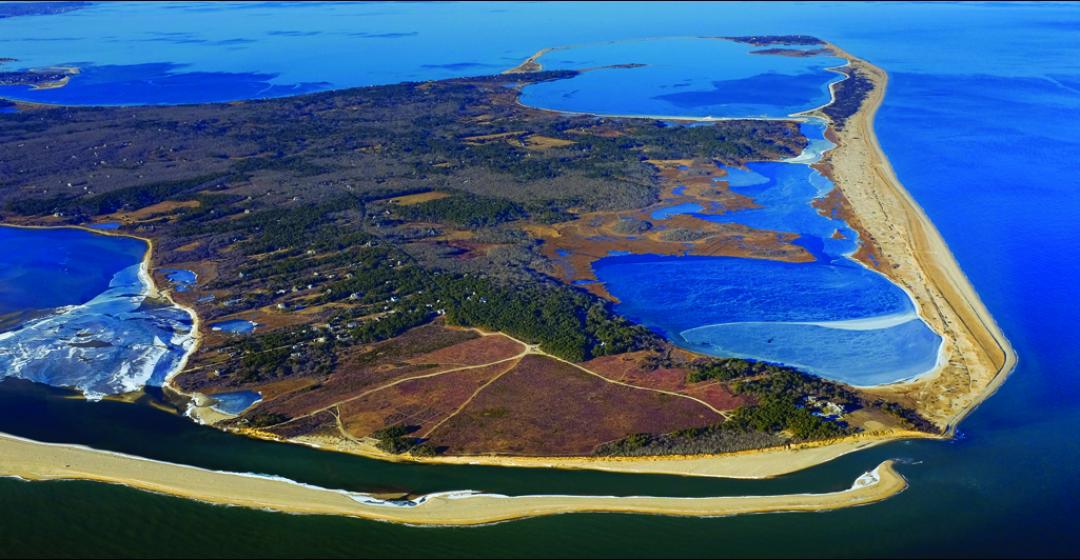This year will be a busy one for the cadre of Islanders who keep a close eye on what’s going on at Norton Point. From fishermen to scientists, the two-and-a-half-mile barrier beach that sometimes connects Edgartown’s South Beach and Wasque on Chappaquiddick is a source of fascination. In April 2007 a northeaster broke through the beach, creating an inlet that connected Katama Bay and the Atlantic Ocean. In the years that followed, the “opening,” as it is known in local parlance, migrated eastward. The resulting erosion at Wasque Point was dramatic, with one house left fewer than 30 feet from the edge and another, the 8,300-square-foot home owned by Richard and Jennifer Schifter, relocated. In all, somewhere in the neighborhood of 50 acres were lost to the ocean.
As 2015 began, however, the opening appeared on the brink of closing. With the end of the barrier beach only about 250 yards away from Wasque Point, the buzz became not if, but when it would close.
“It’s definitely heading toward closure,” said Britt Raubenheimer, who with her husband and fellow Woods Hole Oceanographic Institution scientist Steve Elgar has been studying Norton
Point since 2011. “We want to understand inlets and inlet evolution in general,” said Raubenheimer of their research goals. The same physics in effect at the opening could be applicable to other inlets elsewhere, she said, but the change is so rapid at Norton Point that it can be measured and tested over a reasonably short time frame. “If we can learn about things in Katama, not only do we know more about how Katama works, but we also know more about how beaches work all over the world,” echoed Elgar.
Still, neither Raubenheimer or Elgar are willing to predict when the opening will close. “It doesn’t go uniformly more and more closed, it cycles back and forth, closed then a little open,” Raubenheimer said. In particular, said Elgar, the right northeaster hitting at the right tide could force the breach to open wider. But all things considered, he said, “it seems like it’s on its way to closing at some point.”
But when that point might be, not even history offers much in the way of a guide. In the past century the beach breached naturally in 1976 and 1953, and was artificially opened in 1921 and 1937 in the hope of improving shellfishing in Katama Bay. While one of those openings closed after only a single year, most took between a dozen and seventeen years to complete the process.
Some breaches closed, reopened, and closed several times before stabilizing. And one that was known to be open at the time of the American Revolution took more than ninety years to close. Which is to say that if you are planning to go and watch Norton Point reconnect to Wasque this summer, you might want to bring a sandwich.





